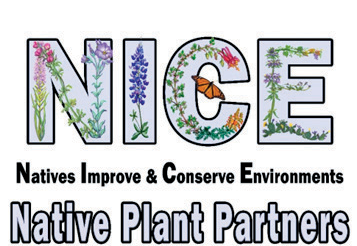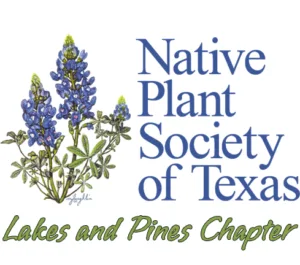Welcome to the Lakes and Pines Chapter of
the Native Plant Society of Texas
Founded in November of 2023 with the great support of our members and volunteers, the Lakes and Pines Chapter, a 501(c)(3) organization, promotes research, conservation, and utilization of native plants and plant habitats of Texas through education, outreach, and example. Our chapter includes Wood and surrounding counties. The Lakes and Pines Chapter takes in two Level 3 Ecoregions, East Texas Plains and the Western Gulf Coastal Plain. With towering pines and hardwoods, rolling hills and prairies, and lakes too numerous to count, this area has an average of 45” of rainfall annually and enjoys a wide range of plant and wildlife habitats.
As you explore our web site, you’ll find a variety of useful local information and resources, chapter news and events along with exciting programs and activities. We encourage you to get involved through membership, as a volunteer, or simply as someone interested in ecosystem sustainability. Utilize the resources provided by this website and the Native Plant Society of Texas to support the conservation and utilization of native plants and plant habitats.
BREAKING NEWS !
We are proud to announce that the Bob Wells Nursery at Sorelle Farms in Mineola is a NICE nursery! They have become a partner in the NICE (Natives Improve and Conserve Environments) Native Plant Partner program, a collaboration between the Native Plant Society of Texas and local nurseries around the state to offer native plants that are right for the local environment. For more information about the Bob Wells Nursery at Sorelle Farms, click here. To search for other nurseries supporting the NICE Native Plant program click here. PLEASE SUPPORT OUR NATIVE PLANT PARTNERS!
What's So Great About Native Plants?
Native Plants . . .
- Have grown and survived here for over 500 years
- Some native plants can thrive in a variety of conditions but most need a defined climate, soil, light and amount of water
- Texas has over 5000 native plants but very few grow state-wide
- Are drought-tolerant, naturally conserving our precious water resources
- Provide habitat and food for birds, butterflies, bees and other wildlife
- Don’t need special pampering or fertilizing
- Are natural to their ecosystem
- Help us maintain biological biodiversity
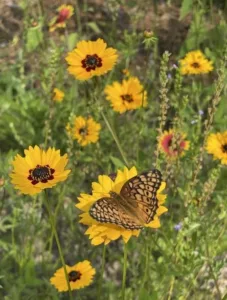
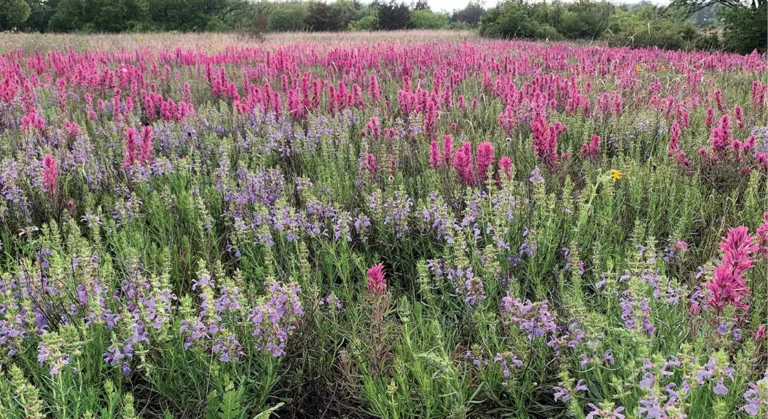
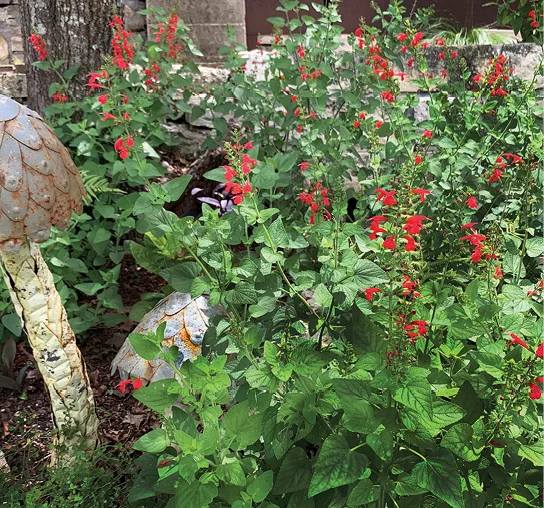
Lakes and Pines Chapter Meetings and Events
Our meetings are in person and open to the public. Chapter Meetings are generally held at 2:00pm on the first Wednesday of the month.
• 1:30PM – Greeting friends old and new
• 2:00PM – Meeting begins, starting with a special presentation about native plants or related topics followed by a brief business meeting.
• We currently meet at Bob Wells Nursery @ Sorelle Farms located at 975 County Road 2220 in Mineola, TX. Join us and bring a friend!
Monthly Raffle, Chapter Fundraiser – Really cool items are being donated by our members as prizes for raffles. Get one ticket for a $1 donation or 5 tickets for $3. Winner(s) announced at end of monthly meetings. We appreciate your support of our fundraising efforts!
Lakes and Pines Chapter News
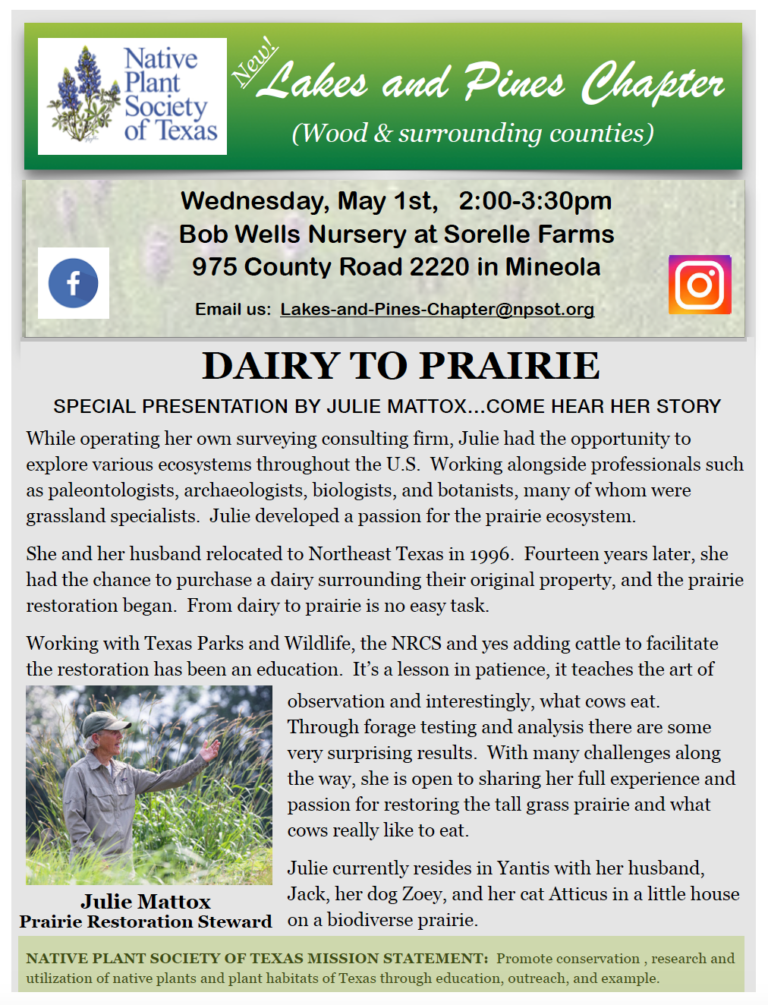
May 1 Lakes & Pines Chapter Meeting: Dairy to Prairie with Julie Mattox
Come hear Julie’s story about how she developed a passion for restoring the tall grass prairie.
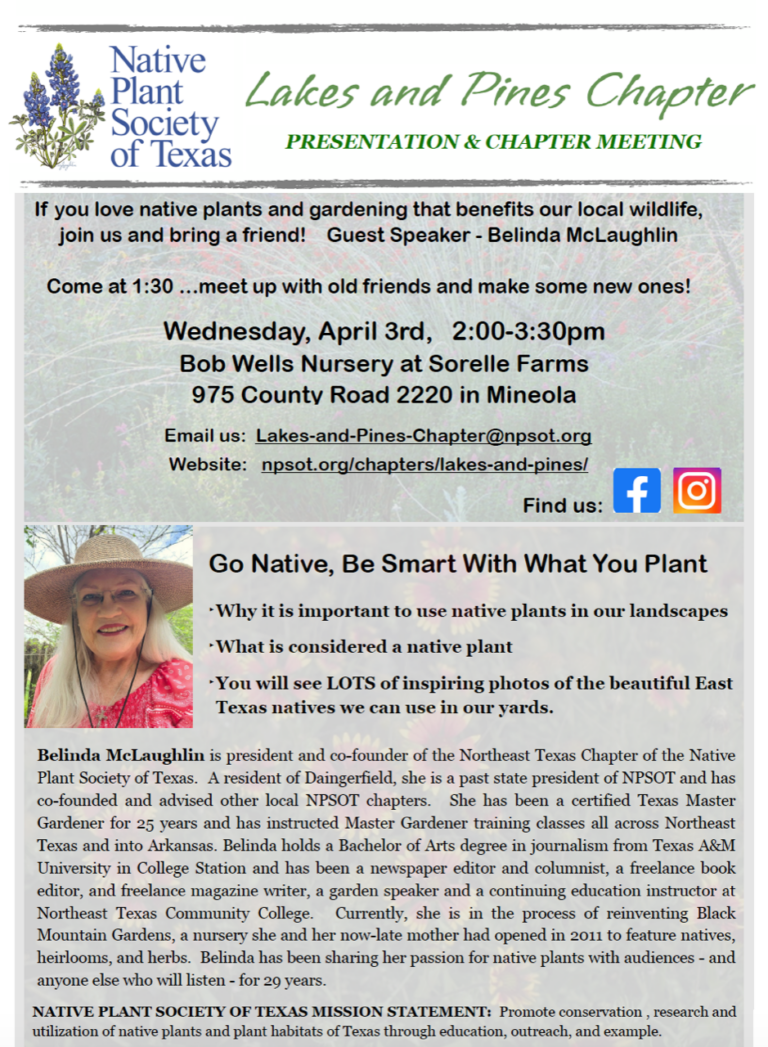
April 3, 2024: Go Native, Be Smart With What You Plant! – Belinda McLaughlin
Why it is important to use native plants in our landscapes What is considered a native plant See LOTS of inspiring photos of East Texas natives we can use in
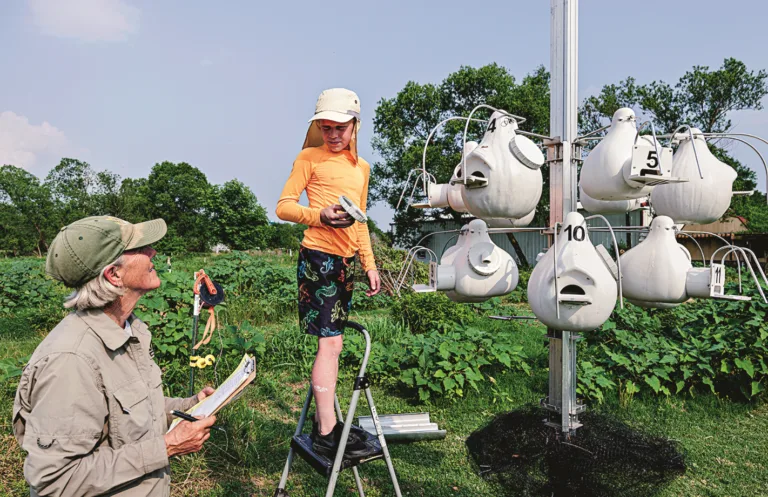
Julie Mattox Puts Out Welcome Mat for Purple Martins in NWF Ranger Rick Magazine
William Ebel is helping to monitor a colony of purple martins on “landlord” Julie Mattox’s ranch. Julie’s ranch has several gourd racks. Altogether, they add up to 92 nesting gourds!
Native Plant Society State Virtual Events
These on-line virtual events, sources of a wide variety of valuable information, are produced by NPSOT Chapters around the state and are available to all members.
Native Plant Society State News
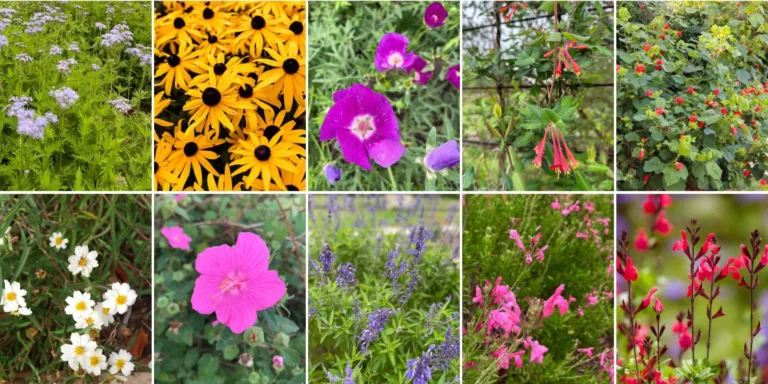
H-E-B native plants on sale
We are beyond excited at the response to our latest collaboration with H-E-B to get native plants to their stores and to the larger Texas community. To the best of
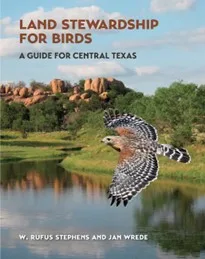
Land Stewardship for Birds
May 28, 2024: Presentation by Rufus Stevens. Land Stewardship for Birds: A Guide for Central Texas
Chapter Meeting, May 7
The meeting will start with a social time at 6:00pm, at the Cibolo Nature Center Auditorium. Announcements will begin at 6:45pm, followed by the presentation. For the social time, please
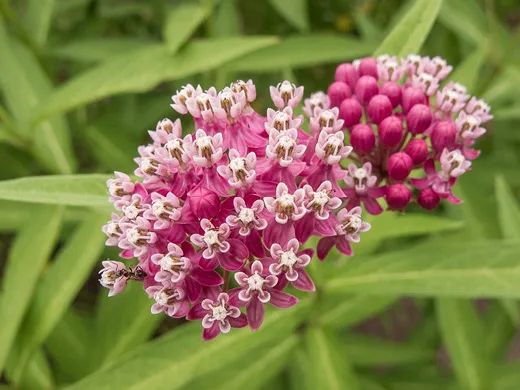
Member News: Promoting Native Milkweeds
By Greg Pearson, Clear Lake Chapter My interest in Monarchs and milkweed started following a trip my wife and I took to visit the Monarch wintering grounds in Mexico. After

